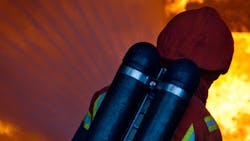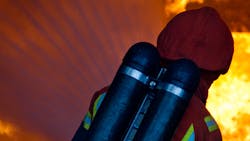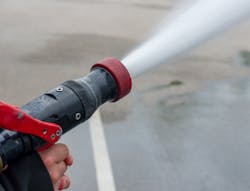On many occasions when I get a question in my profession, almost whatever that question is, my answer is “it depends.” It is almost as if it has become my signature. Some questioners think I'm joking, or they try to turn my answer into a joke, some others get frustrated or even upset or angry, while a third and very small group asks the obvious and interesting question of what it depends upon.
So, it is not enough with answering that “it depends” no matter the question, we must also highlight what it depends upon and maybe even have a discussion about it in order to sort out all aspects of the answer. And this is where it gets complicated, for several reasons.Amongst other things, for most people it seems to be difficult keeping two or more things in the mind at the same time and the ability for people to see things from different perspectives is not always the best. Another reason is that most people prefer simple solutions to complex problems. We may also prefer someone else to present an answer so that we don’t have to think or take responsibility for the consequences. As humans, in many cases we are lazy and irresponsible. A third reason might be that we often forget about context. Our inability to understand the answer “it depends” is usually a very intricate mixture of causes.
Many people in the fire service, and most likely in several other professions, seem to have a preference for overestimating the importance of personal experience and drawing far-reaching conclusions based on single cases. If we have experienced something once or used a specific tactic successfully once, we get biased and get stuck on this single experience or this single tactic. A consequence of this may be difficulties in learning new things. All of this together can lead to ineffective operations and, in the worst case, dangerous situations.
Fog vs. smooth bore nozzles
One example on this, would of course be the never-ending discussion regarding fog nozzles versus smooth bore nozzles. It appears as if most people involved in the discussion have experienced one or the other, but not both. Consequently, the discussion soon becomes polarized as well as emotional. Both sides are reluctant on giving up their position. But, if we are interested in finding the true answer, we must have knowledge and understanding on at least two things: extinguishing mechanism of water and context. The first part is easy, while the second part is hard.What water as well as any other extinguishing agent does to fire is that it transfers energy from one form to another in such a way that temperature is reduced. At some point, the temperature drops to a point where fire no longer can exist. It is as simple as that.
There are five mechanisms associated with extinguishment. They apply to most extinguishing agents, but in this case, I will stick to water. Also, keep in mind that all these mechanisms are important as well as necessary for fire to go out. The mechanisms are
- Gas phase cooling—this includes cooling of hot gases as well as flames
- Oxygen depletion and flammable vapor dilution—water vapor dilutes the pyrolysis gases and makes them non-flammable
- Wetting and cooling of the fuel surface—if the fuel no longer produces pyrolysis gases, the fire will go out
- Radiation attenuation—water molecules as well as droplet blocks re-radiation from flames back to the fuel
- Kinetic effects—the adding of water stirs things around, although adding air it also disturbs the combustion process
Droplet size (and a water stream from a smooth bore nozzle might very well be treated as a very large, continuous, droplet), affects how long the droplet will travel (due to evaporation, initial velocity, mass and “air resistance”). A smaller droplet evaporates faster but doesn’t necessarily travel that very far. A larger droplet doesn’t evaporate very fast, but it travels further.
Context
At this point we must add context to the problem.
Depending on what I would like to achieve with my water application I need to choose which tool to use. To hit a fire at some distance, I would need a smooth bore nozzle simply because it will make it possible for me to reach the fire without exposing myself to heat. To attack a fire or to cool something in my vicinity, I would use a fog nozzle simply because I will hit a larger surface area with less effort. If I have problems with pressure or suspecting the risk of a blocked standpipe, such as in high rises, I would use a smooth bore nozzle (fog nozzles are usually more sensitive to pressure as well as to particles in the water).
For gas cooling, I would also use a fog nozzle because it produces smaller droplets passing through hot gases. A smooth bore nozzle is not that efficient in gas cooling. On the other hand, a fog nozzle would have a larger kinetic effect, reducing visibility and possibly increasing temperature where I am sitting. It will also move more air towards the fire than a smooth bore would do. However, adding air should not be a huge problem since the nozzle is also adding water. And, performing gas cooling correctly inside a building would primarily only render in the movement of air already inside the building, not adding fresh air from the outside.
Apart from the extinguishing mechanisms of water, it’s also a question of flow rate. Or, to put it simple, a large fire requires more water than a small fire, assuming that I can reach the fire. And, there’s also a relation between type of nozzle and compartmentalization. A compartmentalized fire becomes ventilation controlled faster, consequently being reduced in its rate of heat release but still producing hot pyrolysis gases, generally speaking. Then, such fires would require less water, introduced as small droplets so that the hot gases are cooled. A fog nozzle would be more appropriate for a compartmentalized, shielded fire of restricted size. On the other hand, a smooth bore nozzle would be more appropriate for a non-compartmentalized unshielded fire of unknown size. More appropriate or less appropriate, both are still valuable tools in either situation. Adding water to fire is always a good thing, no matter how you do it.
Conclusion
Consequently, it’s not an either/or—sometimes we need a smooth bore, sometimes we need a fog nozzle. It depends. But to make the best use of what we have, we need to understand how the five extinguishing mechanisms work and how they apply to different situations depending on what we are to achieve.
The only true answer to many questions in the fire service is that “it depends.” There is rarely a single answer, any simple solution or any ultimate tactic that can be applied everywhere in any thinkable context. The important question is what it depends upon. And that requires knowledge and understanding as well as experience to answer.
About the Author
Stefan Svensson
Stefan Svensson started his career as a firefighter in the Swedish Air Force in 1986. He has a bachelor’s degree in fire safety engineering and a PhD at Lund University, Sweden, where he is now an associate professor. Since 1994, Svensson has been involved in experimental and theoretical investigations on firefighting tactics, including firefighting methods as well as problems of command and control. The safe and effective use of firefighting resources is a particularly important feature of his work, especially in relation to fire safety design of buildings. He is involved at the local fire brigade, as a firefighter/crew commander.



